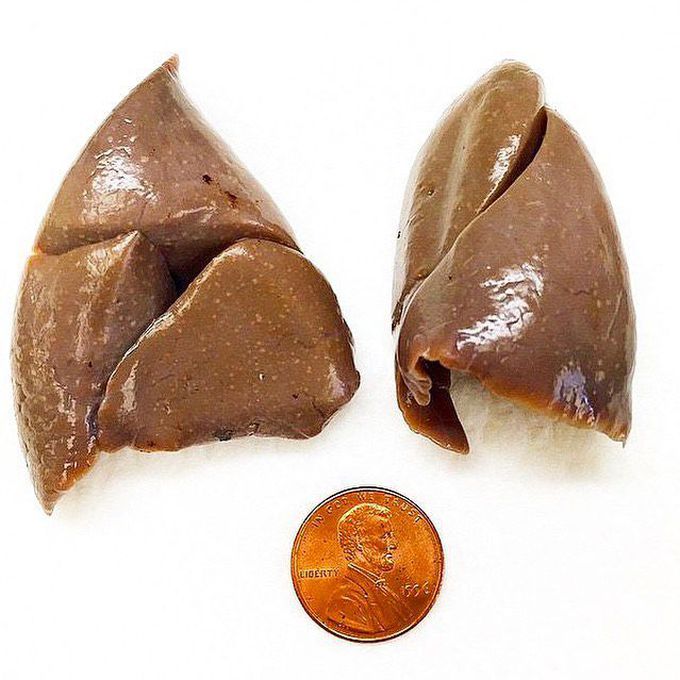


Here is an incredible shot that demonstrates how small a developing pair of fetal lungs can be! Regardless whether they call the land, the sky, or the water their home, all reptiles, birds and mammals rely on their lungs for gas exchange. To fulfill the task of gas exchange, the lung possesses a huge inner surface and a tree-like system of conducting airways ventilating the gas exchange area. During lung development, the conducting airways are formed first, followed by the formation and enlargement of the gas exchange area. The development of the respiratory system begins at about week 4 of gestation. By week 28, enough alveoli have matured that a baby born prematurely at this time can usually breathe on its own. The respiratory system, however, is not fully developed until early childhood, when a full complement of mature alveoli is present. During weeks 4-7, an olfactory pit is one of a pair of structures that will enlarge to become the nasal cavity. The lung bud will bulge from the foregut and develop. The laryngotracheal bud will develop into the trachea and bronchial bud, which eventually become the bronchi and all other lower respiratory structures. By week 16, respiratory bronchioles form. The fetus now has all major lung structures involved in the airway. Once the respiratory bronchioles form, further development includes extensive vascularization, or the development of the blood vessels, as well as the formation of alveolar ducts and alveolar precursors. At about week 19, the respiratory bronchioles have formed. Major growth and maturation of the respiratory system occurs from week 24 until term. More alveolar precursors develop, and larger amounts of pulmonary surfactant are produced. The respiratory system continues to expand, and the surfaces that will form the respiratory membrane develop further. At this point, pulmonary capillaries have formed and continue to expand, creating a large surface area for gas exchange. The major milestone of respiratory development occurs at around week 28, when sufficient alveolar precursors have matured so that a baby born prematurely at this time can usually breathe on its own. Photo by @mrs_angemi
Hemodynamic stimuli&nonhemodynamic stimuliEffects of sugar on teeth


